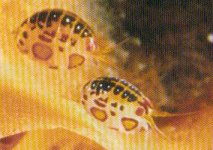A
Anonymous
Guest
Hi folks. It appears that recently I have been receiving a rash of complaint that my customers critters (usually corals) were "infested" with copepods. 16 in one bag, 13 in another, some don't bother to count.
Normally I wouldn't think much about it, but with the increasing number of people complaining I am wondering who is the chicken little screaming about copepods?
From what they tell me when I ask them why they feel they need to be erradicated from their tank I am told because they spread disease and infection and are the demise of the natural reefs which have been plagued with decline and disease.
Someone pulling my leg?
Normally I wouldn't think much about it, but with the increasing number of people complaining I am wondering who is the chicken little screaming about copepods?
From what they tell me when I ask them why they feel they need to be erradicated from their tank I am told because they spread disease and infection and are the demise of the natural reefs which have been plagued with decline and disease.
Someone pulling my leg?






